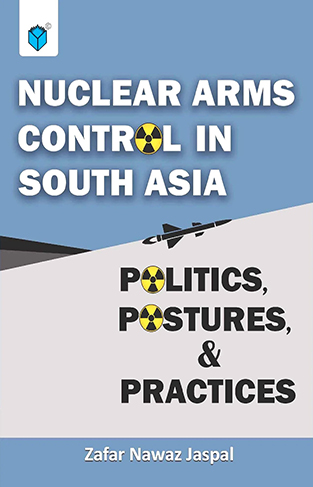NUCLEAR ARMS CONTROL IN SOUTH ASIA POLITICS POSTURES AND PRACTICES
NUCLEAR ARMS CONTROL IN SOUTH ASIA POLITICS POSTURES AND PRACTICES
By:
-
Rs 2,495.00
- Ex Tax :Rs 2,495.00
- Price in loyalty points :2495
Due to constant currency fluctuation, prices are subject to change with or without notice.
Arms Control in South Asia: Politics, Postures, and Practices explain the dynamics that feed into critical strategic developments relative to nuclear proliferation, postures and arms control, South Asian nuclear dynamics, and emerging technologies contribution to the nuclear arms race. The book contains theoretical and empirical causations and explanations of nuclear proliferation and arms control challenges in South Asia.
The primary focus is on current developments with historical contextualization that feed into India’s and Pakistan’s current nuclear doctrines and postures. These nuclear doctrines and postures do not exist in isolation. Still, they are embedded in and shaped by norms, rules, and legalities as defined by the global nuclear order and real-world intersections between the global and regional geostrategic environments. Furthermore, newer challenges in the form of emerging technologies, as evidenced by the growth of Artificial Intelligence (AI) and hypersonic weapons, have added a layer of strategic complexity between India and Pakistan.
To understand Arms Control in South Asia, it is imperative first to dissect the nuclear postures of India, Pakistan, and other nuclear weapons states. Nuclear posturing aids in understanding the constitutive elements through which a state gives meaning to its possession of nuclear weapons. The book seeks to fill a void in the available literature on nuclear studies in South Asia, focusing primarily on historical rivalries between India and Pakistan. In attending to a detailed analysis of India and Pakistan’s nuclear doctrines, postures, and approaches toward nuclear arms control and nonproliferation, the book makes a distinct contribution. Moreover, with an added gaze on arms control and emerging technologies, the book points to possible future trajectories of the nuclear landscape in South Asia.



